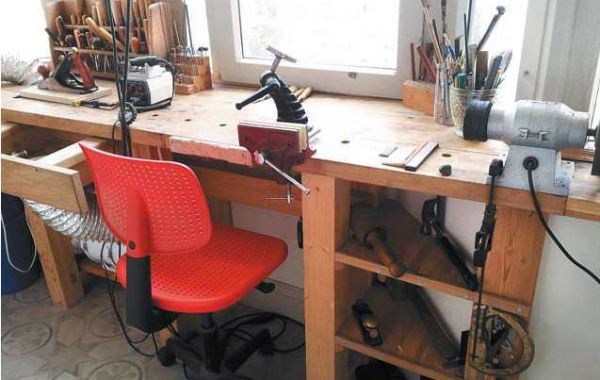Don't delay, just learn to sharpen and adjust your chisels and knives. From the very first day of carving. Any initially sharpened incisors, no matter how good they were forged steel (yes at least from Valerian!), Dull in the process of work, or, as we say, “sit down”. Carving with a blunt chisel is a continuous punishment and a cross on free creativity. Every time you hand over a shrunken tool for sharpening to another master, you will not save enough money, and you will still wait for the execution of the order.
Best Sharpening Compound can help you.
In fact, the sharpening process, while tedious and confusing at first, requires only practice and patience. Train, sharpen, sharpen, sharpen, and as an unexpected gift in one moment, having achieved a beautiful and even cutting edge, you suddenly realize that sharpening is akin to pleasant meditation.
Sharpening machine
Sharpening from scratch or re-sharpening chisels and knives by hand on stones is quite tedious and time-consuming, so buy a regular sharpener with a capacity of at least 200 watts. The more powerful the machine, the more stable the rotational speed of the wheel when pressing on it with the cutter. For my chisels and small knives, a 200-watt machine is enough, although there is a 500-watt machine on the farm, and even a professional belt grinder for knife makers.
Sharpeners are sold complete with coarse and finer abrasive wheels. Remove the rough stone together with the casing, and replace it with a leather or felt circle.
There is a non-standard aluminum-based diamond wheel installed on my machine, so I removed the protective cover. When working with a standard abrasive wheel, the protective cover must be installed (to protect the master in case the stone cracks and scatters in different directions).
I recommend using a standard abrasive wheel on your basic grinder - it is better suited for sharpening chisels from scratch. The diamond wheel is harder and more suitable for small dressing of the blades. It is undesirable to change circles during operation, since they run in over time and are centered on the engine shaft. Most craftsmen prefer to sharpen the tool by weight, so they remove the support pads of the sharpening machine.
Safety advice: note that the machine in the photo is turned in the opposite direction and is attached to the tabletop with clamps. With this position of the machine, the wheels rotate "away from themselves" - this direction is necessary for safe dressing of the tool on a felt or leather wheel.
The theory on this topic can be found on the Internet in full detail.
Many craftsmen perform light dressing of the blades on a machine. This is a quick and effective way to bring chisels "to life", but the blades, with frequent dressing on a felt wheel, quickly get stuck and after a short time require major sharpening. And the more often the master makes a major sharpening, the faster the blade is sharpened. Use a finisher often.
Now about what is "wrong thread". Remember the dacha story of "digging the beds with a shovel." We stick a shovel into the ground, push it with our foot, and ... we do what we should not do when carving wood with knives and chisels - we pry, lift and turn the array. That is, when carving, you cannot stick a chisel into the wood and then pry on, pick up the wood like earth with a shovel - the blade sits down instantly, and the carving turns out to be untidy.








